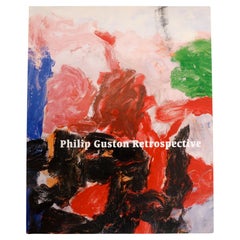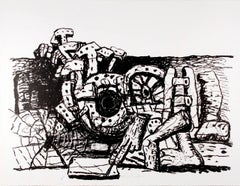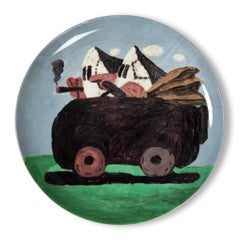Items Similar to Monograph: Philip Guston (Hand signed, inscribed and dated to a major collector)
Want more images or videos?
Request additional images or videos from the seller
1 of 16
Philip GustonMonograph: Philip Guston (Hand signed, inscribed and dated to a major collector)1980
1980
$7,500
£5,816.91
€6,593.24
CA$10,733.78
A$11,728.88
CHF 6,080.64
MX$140,118.13
NOK 77,379.86
SEK 72,445.89
DKK 49,233.11
About the Item
Philip Guston
Monograph: Philip Guston (Hand signed and inscribed to major collector by Philip Guston), 1980
Softback monograph (hand signed, inscribed and dated by Philip Guston to Mary Keesling)
Warmly signed and inscribed by Philip Guston to Mary Keesling on the title page
10 1/4 × 9 × 3/4 inches
If you're reading this description, then we hardly need to tell you, dear collector and Guston enthusiast, that autographed books (autographed anything) by Philip Guston are beyond scarce - let alone this one which has such special poignancy. Read on:
This softback monograph, hand signed and inscribed to renowned collector Mary Keesling in May, 1980 may very well be one of the very last books Guston ever signed before his unexpected heart attack at the age of 66 the following month on June 7th, 1980. In fact, Ms. Keesling herself must have been so shocked, that she laid in a xerox copy of Guston's New York Times obituary into the book, which accompanies it.
Guston's inscription reads:
For Mary Keesling
Fondly - and even
more so - as time
goes on -
Philip
May 1980
The part of the inscription that reads "as time goes on" is heartbreaking, knowing that Guston would be dead only weeks later.
About Philip Guston:
Philip Guston grew up in Los Angeles, the youngest of seven children of Russian Jewish immigrants. After high school, Guston moved to New York and worked as a mural artist in the New Deal program, where he painted in a social realist style. By the mid-1950s, he had become an established member of the dominant school of spontaneous, gestural abstract painters. He created large canvases in which vividly colored brushstrokes define a nexus of activity against a muted background.
In 1970, however, Guston shocked the art world with a radical change of style and subject. His new paintings featured cartoonish figures in a lurid palette of pink, red, and black. Some of these later works are allegorical treatments of modern evil (represented, for example, by figures dressed in the hoods of the Ku Klux Klan), while others include autobiographical emblems of Guston’s own childhood struggles, adult life, and artistic process. Though at times he was heavily criticized for this shift away from abstraction, Guston remained devoted to figuration for the remainder of his career.
About Mary Keesling
Mary Heath Keesling August 10, 1914 - December 23, 2006 "My happiness comes from the creativity of others" Mary was daughter of the late Winifred and John Gilbert Heath, and niece of the late Alice and Rev. Henry Ohlhoff, pastor at St. Mary the Virgin Episcopal Church, 1923 - 1936. Mary graduated from the Katherine Delmar Burke School, and from the University of California Berkeley, where she was a Kappa Kappa Gamma. It should be noted that Mary was a competitive skeet shooter during this time. Mary married the late Francis V. Keesling, Jr. of San Francisco in 1937. As young marrieds, they enjoyed many opportunities including the enjoyable highlight of living in Washington, D.C., 1941 to 1945, where her husband, Frank, was appointed to a position by Brigadier General Lewis Hershey. Their son, Francis V. Keesling III (Frank) was born in Washington in 1943. After their return to San Francisco, Mary joined the Junior League of San Francisco, and through her provisional volunteer work at the Museum of Art, (then located in the Veteran's Building on Van Ness) her dedicated interest and appreciation of contemporary art was sparked. Mary was appointed by the late Mrs. Walter A. Haas, Sr., (Trustee) to establish a purchase fund in 1954 to buy local art for the museum's permanent collection. "Mary Keesling is credited with being responsible for choosing the Women's Board's acquisitions for the permanent collection, some which were very prescient choices that have had significant life in the collection. She clearly steered the Women's Board toward California artists, including Richard Diebenkorn, Bruce Conner, David Park, and Roy de Forest. Her own gifts to the museum are almost entirely works by California artists as well. Mary also supported a few early A&D acquisitions (Architecture and Design), specifically a selection of John Dickinson furniture acquired in 1979, four years before the department was established." Mary was a member of the MOMA Women's Board starting 1959, and subsequently held offices of 1st vice president, president and chairman. Mary was a member of the Artist's Circle and also a trustee 1974 - 1980, 1985-1987. Mary was also chair of the 50th Anniversary of MOMA with celebratory decor by her good friend, artist Jack Johansson. Steve Oliver, trustee and the present chairman of the board of San Francisco MOMA said, "She made the Bay Area art scene richer by her support and appreciation." Mary was a member of SECA, (Society for the Encouragement of Contemporary Art) at MOMA. Byron Meyer, art collector and former trustee of MOMA knew Mary when she first started collecting. "She encouraged her friends to visit artists in their studios. She was an inspiration for them starting to collect Bay Area art. She had a remarkable eye." "Mary, a former trustee and generous donor to SFAI (San Francisco Art Institute formerly, California School of Fine Arts) was a member of the San Francisco art community for more than 50 years. As an art consultant and advisor she helped build many important collections of contemporary art, and was a special champion of Bay Area artists. She was a prominent member of the San Francisco Art Institute's Women's Board throughout the 1950's, 1960's and 1970's. She was a neighbor and friend of the Art Institute and was involved in countless events and activities there. She generously contributed funds for scholarships as well as the renovation of the garden courtyard fountain and re-planting the Chestnut Street gardens." Mary also was affiliated with and supported CCAC, now CCA. Friend, Tecoah Bruce, trustee and former chair of the board of trustees at CCA (California College of the Arts) said, "She was a wonderful and gracious hostess, the Dean of good taste known for her manners and grace, and always generous in introducing new leaders in the art world to the local and national scene." Mary, herself was a work of art, in her presence, appreciation, understanding and choice of art, fashion and home and garden environment. She will be greatly missed by her family, many friends and colleagues. She set a high bar of accomplishment, appreciation and many generous donations of artistic value. Mary is survived by her son, Francis V. Keesling III (Frank) and his wife, Arlene of Sonoma. Services will be private. Donations may be made to SFMOMA, San Francisco Art Institute or a charity of your choice.
Publisher's blurb:
A brief biographical sketch precedes a selection of drawings and paintings that illustrate Guston's evolution as an artist, including murals, abstracts, and more recent work
About the book:
Publisher: Brand: George Braziller, 1980
Paperback; 151 pages with color and bw illustrations
Published by George Braziller in association with the San Francisco Museum of Modern Art
- Creator:Philip Guston (1913 - 1980, American)
- Creation Year:1980
- Dimensions:Height: 10.25 in (26.04 cm)Width: 9 in (22.86 cm)Depth: 0.75 in (1.91 cm)
- Medium:
- Movement & Style:
- Period:
- Condition:In good vintage condition; overall age wear, toning and handling to the book but interior pages are otherwise clean and fresh.
- Gallery Location:New York, NY
- Reference Number:1stDibs: LU1745213096452
Philip Guston
Philip Guston (1913–1980) was an influential American artist whose career evolved from social realism to abstract expressionism and finally to a unique form of figurative painting. Born in Montreal, Canada, to Russian-Jewish immigrant parents, Guston grew up in Los Angeles, where he was introduced to art and politics at a young age. His early years were marked by personal tragedy, including his father’s suicide, an event that profoundly influenced his later work. In the 1930s, Guston began his artistic career as a muralist under the Federal Art Project, inspired by the social realism of Mexican muralists like Diego Rivera. During this time, his work conveyed strong political and social messages, reflecting the struggles of the working class and the political tensions of the era. By the 1940s, Guston moved to New York, where he became associated with the burgeoning Abstract Expressionist movement alongside artists like Jackson Pollock and Willem de Kooning. His abstract works from this period were characterized by lush, painterly surfaces and a focus on emotional resonance. Despite his success as an Abstract Expressionist, Guston grew increasingly dissatisfied with abstraction’s limitations in addressing personal and societal concerns. In the late 1960s, he made a dramatic shift back to representational imagery, a move that shocked the art world. His later works incorporated cartoonish, symbolic figures—hooded Ku Klux Klan-like characters, shoes, lightbulbs, and disembodied heads—depicting themes of existential angst, political corruption, and personal reflection. These provocative images, such as in The Studio (1969), addressed racism, violence, and the complexities of human identity with biting humour and raw emotion. Critics initially derided Guston’s return to figuration, but his bold departure from abstraction ultimately cemented his legacy as a pioneering figure who challenged conventions and explored deeply personal and political themes. His work resonates with an unflinching honesty and continues to influence contemporary artists grappling with societal issues and the human condition. Guston died in 1980, leaving behind a body of work that defies categorization yet remains profoundly impactful. Today, he is celebrated as an artist who pushed boundaries and redefined what painting could be, inspiring generations with his fearless creativity and commitment to authenticity.
About the Seller
5.0
Platinum Seller
Premium sellers with a 4.7+ rating and 24-hour response times
Established in 2007
1stDibs seller since 2022
461 sales on 1stDibs
Typical response time: 2 hours
- ShippingRetrieving quote...Shipping from: New York, NY
- Return Policy
More From This Seller
View AllRare 1970s offset lithograph exhibition poster (pencil signed by Philip Guston)
By Philip Guston
Located in New York, NY
Philip Guston at David McKee Gallery (pencil signed by Philip Guston), 1974
Lithograph and offset lithograph poster
Signed in graphite pencil under the image
24 1/2 × 20 inches
Unframed, unnumbered
Rare vintage lithographic poster of 1974 Guston exhibition at David McKee Gallery
Signed under the image in graphite pencil by Philip Guston
Another hand signed edition is in the permanent collection of Vassar College; otherwise we haven't seen another besides the present work; a true collectors item when hand signed by the artist.
Philip Guston Biography
Philip Guston (1913 – 1980) is one of the great luminaries of twentieth-century art. His commitment to producing work from genuine emotion and lived experience ensures its enduring impact. Guston’s legendary career spanned a half century, from 1930 to 1980. His paintings—particularly the liberated and instinctual forms of his late work—continue to exert a powerful influence on younger generations of contemporary painters. Born in Montreal, Canada, in 1913 to poor Russian Jewish émigrés, Guston moved with his family to California in 1919. Briefly attending the Otis Art Institute in Los Angeles in 1930, he was otherwise completely self-taught.
Guston’s first precocious work, Mother and Child, was completed when he was only seventeen years of age. Influenced by the social and political landscape of the 1930s, his earliest works evoked the stylized forms of Giorgio de Chirico and Pablo Picasso, social realist motifs of the Mexican muralists, and classical properties of Italian Renaissance frescoes of Piero della Francesca and Masaccio that he had seen only in reproduction. Painted in Mexico with another young artist, the huge fresco The Struggle Against War and Fascism drew national attention in the US. Guston’s success continued in the WPA, a Depression-era government program that commissioned American artists to create murals in public buildings. While not widely known today, the young artist’s early experiences as a mural painter allowed a development of narrative and scale that he would draw upon in his late figurative work. In the early 1940s, as the WPA program was ending, Guston found work teaching at universities in the Midwestern United States. In his studio, he was working in oils on easel paintings that were more personal and smaller in scale, focusing on portraits and allegories, like Martial Memory and If This Be Not I. His first solo exhibition in Iowa was well received and, within a few years, he was offered his first solo show in New York City. Guston was awarded a Prix de Rome, allowing him to leave teaching and spend a year in Italy, studying firsthand the Italian masters he loved.
By the time he had finished The Tormentors, Guston’s move to abstraction was all but complete. On his return from Italy, he continued dividing his time between the artists’ colony of Woodstock in Upstate New York and New York City, which was then emerging as the center of the postwar art world. He rented a studio on 10th Street, where abstract expressionists Jackson Pollock, Willem de Kooning and Mark Rothko also worked. For Guston, success was never what mattered most. He was already impatient with the language of pure abstraction and experimenting with larger forms, using a limited palette of grays, pinks and blacks. As his forms became still more reduced, he stopped painting altogether and embarked on a series of simplified abstract “pure drawings” in brush or charcoal. At this juncture, Guston removed himself from the art scene in New York, living and working in Woodstock for the remainder of his life.
Guston’s move was hardly a withdrawal. Freed from the distractions and formal constraints of the art world and the opinions of critics, he was able to experiment with new forms and to engage more deeply with the issues that mattered to him.
The 1960s was a period of great social upheaval in the United States, characterized by assassinations and violence, civil rights and anti-war protests. “When the 1960s came along I was feeling split, schizophrenic,” Guston later said. “The war, what was happening to America, the brutality of the world. What kind of man am I, sitting at home, reading magazines...
Category
1970s Abstract Expressionist Abstract Prints
Materials
Lithograph, Offset
Francoise Gilot Monograph 1940-2000 (hand signed and inscribed to famed actress)
By Françoise Gilot
Located in New York, NY
Françoise Gilot
Francoise Gilot Monograph 1940-2000 (hand signed and warmly inscribed to renowned actress), 2000
Hardback monograph in a slipcase, hand signed and inscribed by Franco...
Category
Early 2000s Modern Abstract Prints
Materials
Paper, Ink, Mixed Media, Lithograph, Offset
Jean-Michel Basquiat, (1985 monograph, Hand signed and numbered by Basquiat)
By Jean-Michel Basquiat
Located in New York, NY
Jean-Michel Basquiat, 1985
Limited Edition Artist's Book with Offset Lithographs. Hand signed and numbered by Jean-Michel Basquiat
Hand signed and numb...
Category
1980s Pop Art More Art
Materials
Offset, Lithograph
Book: Francis Bacon von [with] John Russell (hand signed and inscribed twice)
By Francis Bacon
Located in New York, NY
Highly collectible and coveted item:
Francis Bacon von [with] John Russell (Monograph, hand signed and inscribed twice by Francis Bacon), 1972
Hardback monograph with dust jacket (ha...
Category
1970s Expressionist Figurative Prints
Materials
Ink, Mixed Media, Lithograph, Offset
Painting-Malerei, monograph hand signed and warmly inscribed to renowned actress
By Françoise Gilot
Located in New York, NY
Françoise Gilot
Painting-Malerei, hand signed and warmly inscribed to renowned actress, 2003
Hardback monograph, signed in ink with lengthy inscription to American actress Elizabeth ...
Category
Early 2000s Abstract More Art
Materials
Ink, Mixed Media, Lithograph, Offset
Monograph: The Complete Paintings (Hand signed, inscribed by Philip Pearlstein)
By Philip Pearlstein
Located in New York, NY
Philip Pearlstein The Complete Paintings, 1984
Hardback monograph with dust jacket
Hand signed, dated and inscribed to Nadine by Philip Pearlstein
12 × 10 1/2 × 1 3/4 inches
This i...
Category
1980s Realist Figurative Prints
Materials
Paper, Ink, Mixed Media, Lithograph, Offset
You May Also Like
Philip Guston Retrospective by Michael Auping, 1st Ed Exhibition Catalog
Located in valatie, NY
Philip Guston Retrospective by Michael Auping. Modern Art Museum of Fort Worth in Association with Thames & Hudson, 2003. 1st Ed softcover exhibition catalog. MET October 28, 2003—Ja...
Category
21st Century and Contemporary American Books
Materials
Paper
Elements
By Philip Guston
Located in San Francisco, CA
Philip Guston was born in 1913 in Montreal, Canada. He began painting at the age of 12, and in 1927 he enrolled in the Los Angeles Manual Arts High School , where both he and Jackson...
Category
1970s Modern Figurative Drawings and Watercolors
Materials
Lithograph
$17,500
Philip Guston, Untitled - Limited Edition Plate, Contemporary Art
By Philip Guston
Located in Hamburg, DE
Philip Guston (American, b. 1970)
Untitled, 2023
Medium: Porcelain plate (fine bone china)
Dimensions: 26.7 cm diameter (10 1/2 in)
Edition of 250: Printed signature and edition deta...
Category
21st Century and Contemporary Contemporary Figurative Prints
Materials
Porcelain
Philip Guston "Studio Corner" Lithograph, Brooke Alexander Gallery
By Philip Guston
Located in Lake Worth Beach, FL
Artist/Designer; Manufacturer: Philip Guston (1913-1980)
Marking(s); notes: signed, blind stamp; ed. 39/50; 1980
Country of origin; materials: Canadian-American; lithograph
Dimension...
Category
1980s Modern Still-life Prints
Materials
Lithograph
Guston, Sans titre, In Memory of My Feelings (after)
By Philip Guston
Located in Southampton, NY
Lithograph on vélin Mohawk Superfine Smooth paper. Paper Size: 11.937 x 8.96 inches. Inscription: Signed in the plate and unnumbered, as issued. Notes: From the folio, In Memory of M...
Category
1960s Abstract Expressionist Abstract Prints
Materials
Lithograph
Autograph Custom Identification - 1960s
Located in Roma, IT
Autograph Custom Identification is hand-signed by Peter Ustinov realized in the 1960s.
The form is written in Italian and belongs to
Good conditions.
Category
1960s Modern More Art
Materials
Paper
More Ways To Browse
George Page
Philip Guston Prints
Basmat Levin
Bortnyik Sandor
Butter Prints
Calder Lithograph Calder Signed
Damien Hirst Etching
Damien Hirst Heart
Dan Namingha Bronze Sculpture
Dan Namingha Bronze
Donald Judd Untitled
Frank Stella Etching
Galerie Rive Gauche
Gerhard Hoehme
Gustave Moeller
Hamanishi Katsunori
Hors D Commerce
Inuit Art Prints
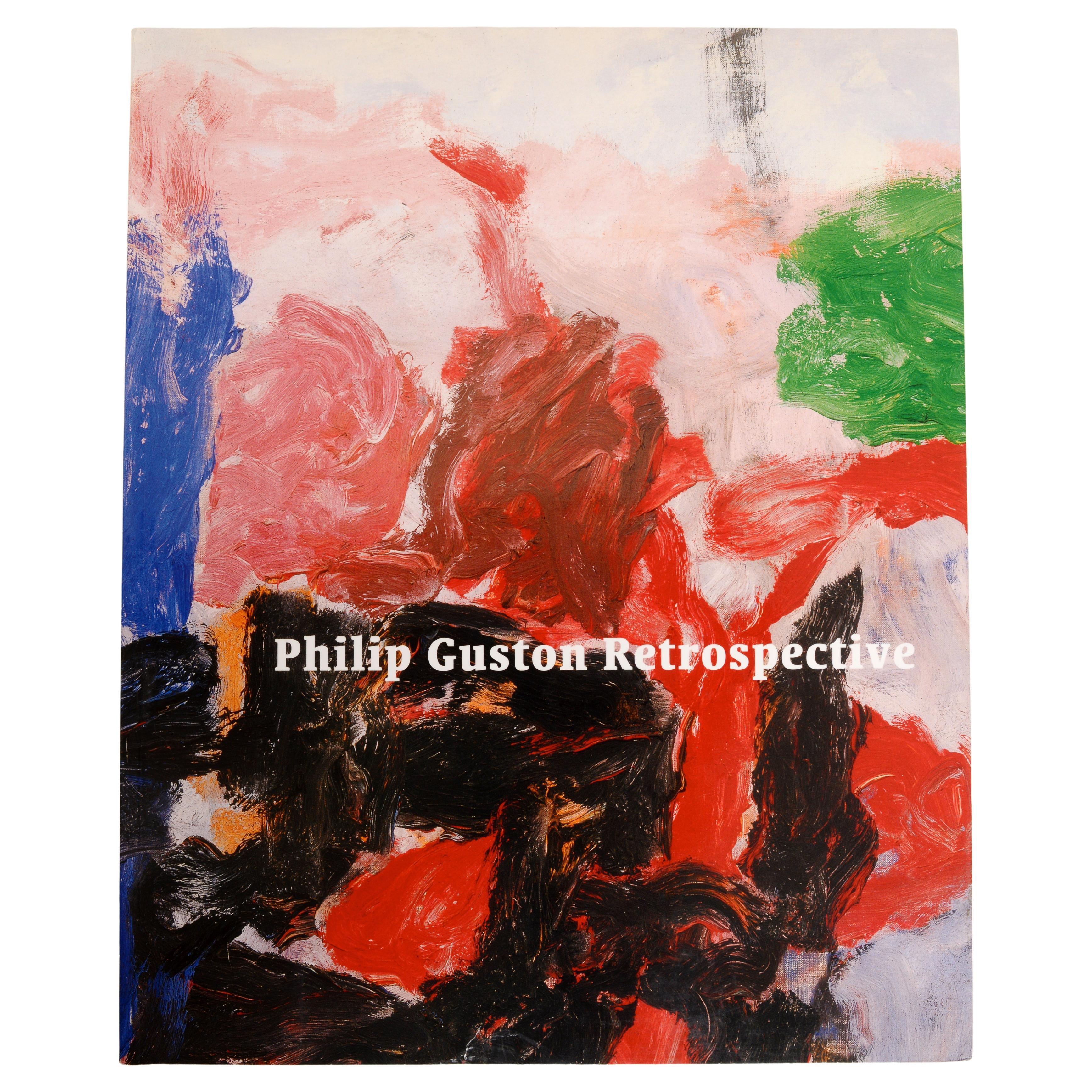

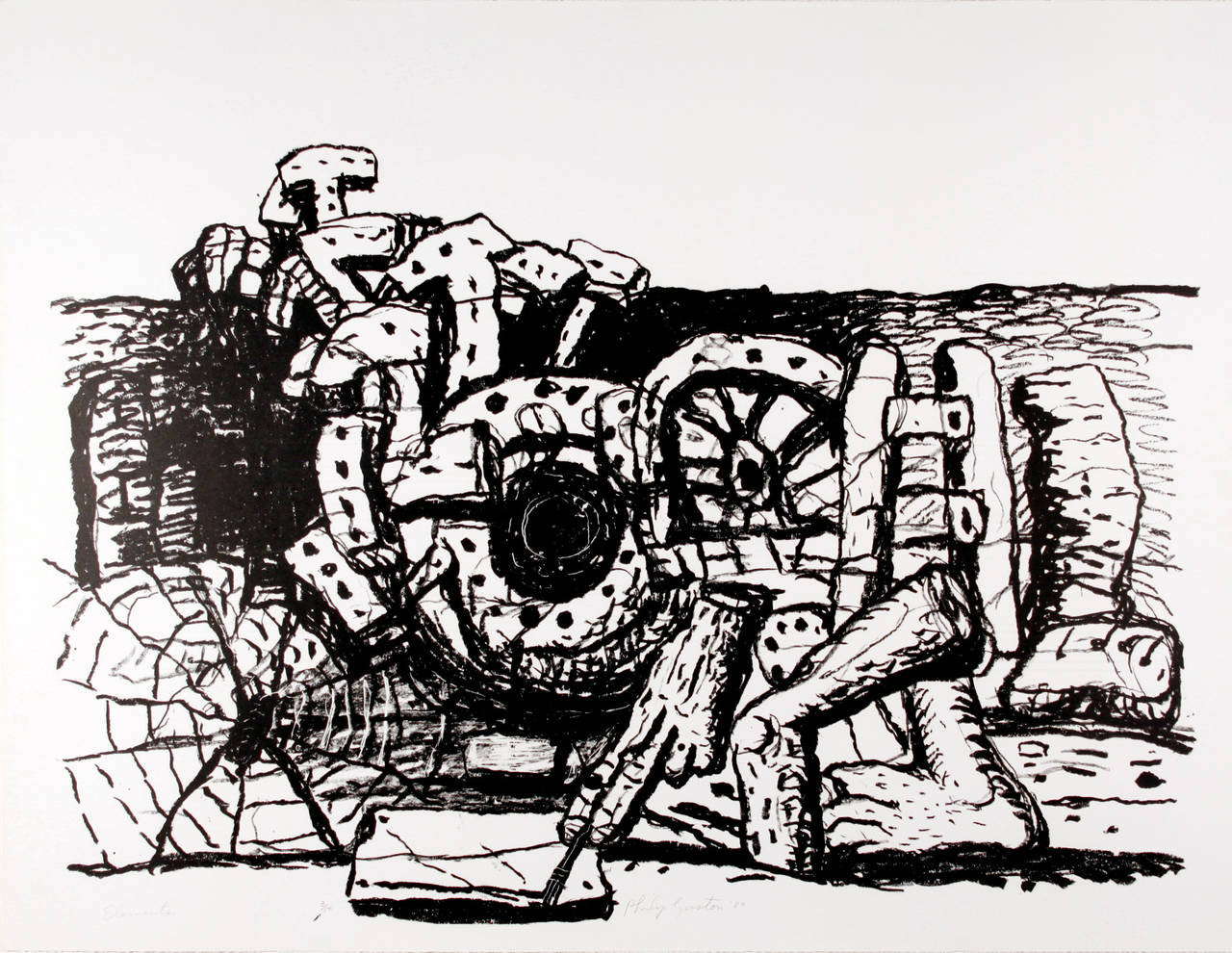
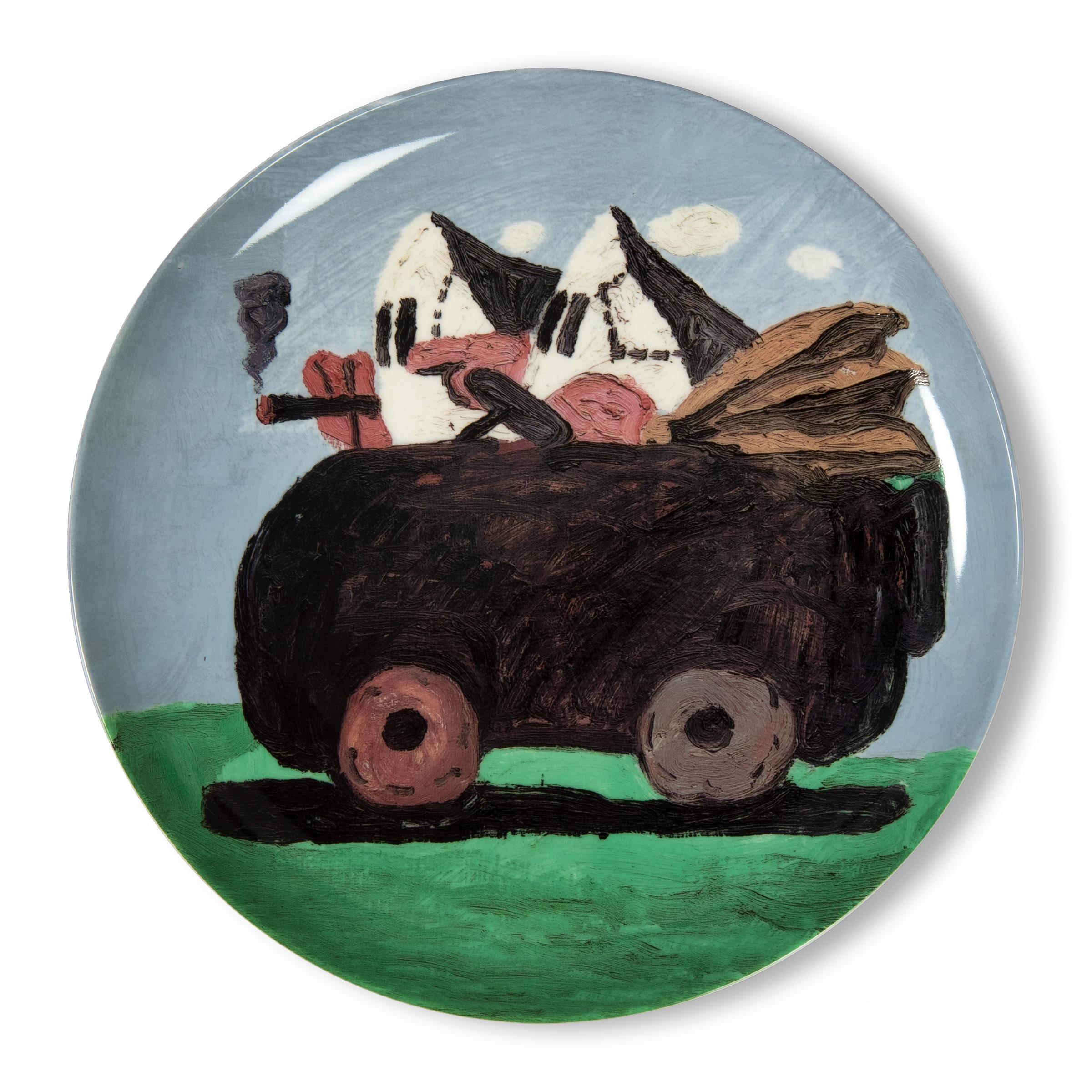

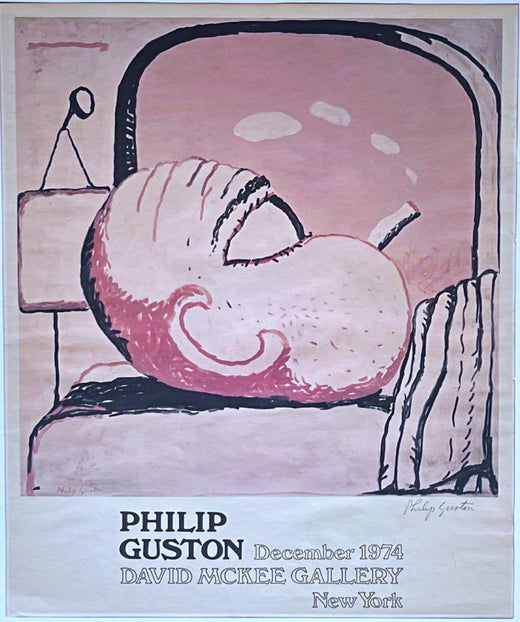
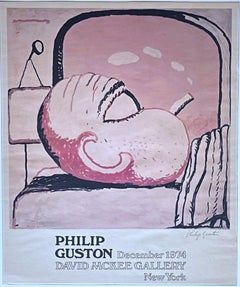


![Book: Francis Bacon von [with] John Russell (hand signed and inscribed twice)](https://a.1stdibscdn.com/francis-bacon-prints-works-on-paper-book-francis-bacon-von-with-john-russell-hand-signed-and-inscribed-twice-for-sale/a_17452/a_130412521694307115175/axScsafc_master.jpg?width=240)
